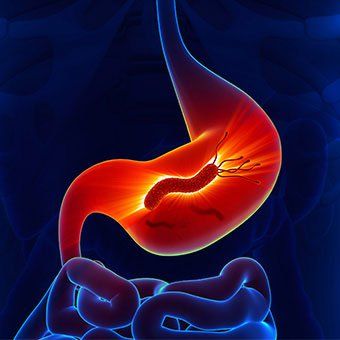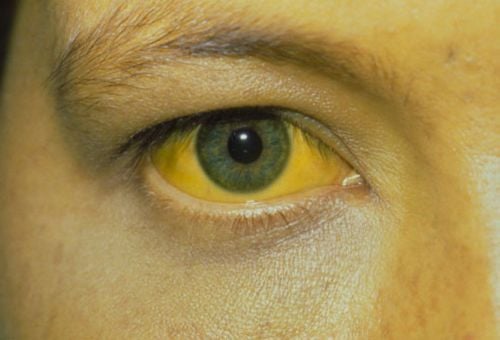This is an automatically translated article.
The article is professionally consulted by Master, Doctor Tran Thi Vuong - Laboratory Department - Vinmec Hai Phong International General Hospital.
Bacillary dysentery is an acute intestinal infection and is the most dangerous of all diarrheal diseases. The most common cause is Shigella gram-negative dysentery bacillus (50%), but it can also be caused by other bacteria or parasites. Mild disease may resolve spontaneously to very severe with severe intoxication, convulsions, hyperthermia, cerebral edema, and rapid death without sepsis or significant dehydration.
1. What is rectal dysentery?
Rectal dysentery or rectal dysentery is an acute infection that damages the large intestine and the terminal small intestine. Unlike adults, dysentery in children has an acute course and is often very severe. The disease occurs at any age and is common in the summer. The disease has a high risk of transmission in areas where there is no clean water source for domestic use. Children often have dysentery syndrome due to lack of awareness about hygiene.Bacillary dysentery, also known as bacillary dysentery or schizophrenia, is dysentery caused by the Shigella bacillus that infects the intestines and rectum. Shigella bacillus belongs to the family Enterobacteriae, which are gram-negative bacilli. They are capsuleless, non-motile and incapable of spore forming, are aerobic bacteria, but can also live in environments lacking O2.
Dysentery bacillus can live in soil for a few months, in flies for 2-3 days, in toys, utensils, and bedding for a few days. In milk and milk products, dysentery bacilli are able to thrive. Dysentery bacillus is easy to die if exposed to sunlight, if boiled, it will die in 10 minutes. Dysentery has a very strong ability to multiply and infect.
Humans are the main source of infection, especially those with acute illnesses. In the early stages of the disease, there will be a large amount of bacteria excreted in the feces. However, the risk of infection is more common in people with chronic diseases because they are less isolated. These people can carry the disease for months to years. In animals, primates can also be a source of disease.
The disease is endemic worldwide. Every year, about 600,000 patients die from bacillus dysentery. Two-thirds of cases and deaths are in children under 10 years of age. The disease is uncommon in children under 6 months of age. The disease is common in crowded places: refugee camps, prisons, child care centers, orphanages, flood areas.
In Vietnam, the disease is endemic throughout the country and increases during the summer. The clinical presentation of Shigella disease can vary from mild diarrhea with watery stools to severe forms with abdominal cramps, tenesmus, bloody stools, fever, and signs of toxic infection.

2. Pathogenesis
Bacilli pass through the mouth to the stomach, due to its high resistance to acid, it crosses the acid barrier in the stomach to the small intestine and then down to the colon to penetrate the colon mucosa and cause disease. Dysentery bacilli can invade the mesenteric lymph nodes but usually do not spill into the bloodstream (Only in severely immunocompromised sites such as HIV-infected patients with AIDS will Shigella bacilli enter the bloodstream).In the colon mucosa, dysentery bacilli multiply rapidly in the mucosal cells, then the bacteria die, releasing toxins that cause congestion, secretions.. Toxins affect the whole body causing syndrome infection - intoxication, but mainly infection. These effects cause the patient to have abdominal pain, nausea and frequent bowel movements, with mucus and blood in the stool. Causes intestinal dysfunction, loss of balance of water, electrolytes and acid-base.
Before the impact of bacteria and dysentery toxins, the body will mobilize all defense mechanisms to eliminate bacteria from the body.
3. Who is often at risk of bacillary dysentery?
Anyone can be infected, especially children because of the habit of putting their hands in their mouths.Bacillary dysentery is transmitted through the gastrointestinal tract, by direct or indirect contact with the source of the disease. Flies are a potential threat because they often carry bacteria to people. The disease is especially prevalent in temperate countries, in hot climates, where people live in crowded cities with poor personal and community hygiene.
Factors that increase the risk of disease include:
Children 1 - 5 years old are susceptible to the disease. Same-sex relations. The disease is easily transmitted in cramped living quarters with poor sense of personal hygiene, lack of clean water, and poor environmental sanitation. The disease often breaks out in groups of nursing homes, mental hospitals, child development centers, kindergartens, schools, rookie camps, dormitories, prisons, etc. stool of the patient.
4. Tests to do to diagnose rectal dysentery

4.1.Blood count The white blood cell count is usually increased in the range of 5,000 - 15,000/mm3, with the percentage of neutrophils accounting for neutrophils. dominance. Normal or slightly reduced red blood cells.
4.2.Stool test The specimen is usually fresh stool or rectal smear.
Fecal examination: When gross blood is unknown; have red blood cells, polymorphonuclear leukocytes Stool culture: Performed in severe cases. Seeing Shigella bacillus has decisive diagnostic value. In the absence of fecal culture, the character of the stool is important for diagnosis. Bacterial identification culture and antiserum agglutination
4.3.Rectoscopy Image of acute diffuse inflammation of the mucosa, with many superficial ulcers 3-7 mm in diameter, possibly bleeding ulcers. The typical case does not require rectal examination. Colonic lesions caused by bacillus dysentery are images of acute diffuse inflammation of the mucosa, with many shallow ulcers, needing local mucus to be cultured for bacteria.
4.4.Serodiagnosis The agglutination reaction detects antibodies in the serum of critically ill and febrile patients but has no early diagnostic value.
In addition to the above tests, the doctor may order some additional tests:
Ionogram, when there is disturbance of consciousness, neurological symptoms, abdominal distension, decreased muscle tone. Blood sugar: When hypoglycemia is suspected. Abdominal X-ray, abdominal ultrasound when abdominal distention is present, when it is necessary to exclude intussusception. Blood smear, platelet count, renal function in case of suspected hemolytic uremic syndrome. If the patient is not treated in time, it can lead to complications and even death. If you experience symptoms such as bloody diarrhea, diarrhea with blood loss, weight loss, and a fever of 38 degrees Celsius or higher, you need to see a doctor immediately. Hopefully the above sharing helps you better understand bacillus dysentery and what tests to do to diagnose the disease.
Vinmec International General Hospital is one of the hospitals that not only ensures professional quality with a team of doctors, modern equipment and technology, but also stands out for its examination, consulting and service services. comprehensive and professional medical treatment; civilized, polite, safe and sterile medical examination and treatment space. Customers when choosing to perform tests here can be completely assured of the accuracy of test results.
Master. Doctor. After graduating as a general practitioner, Tran Thi Vuong spent 2 years training in microbiology in Japan. With 9 years of teaching experience at Hai Phong University of Medicine and Pharmacy, participating in many domestic and foreign scientific research projects, receiving continuous training in Laboratory Biosafety and Laboratory Quality Assurance. at the Central Hospital for Tropical Diseases, has experience in diagnostic testing for bacterial and viral infections. Currently, he is a doctor at the Laboratory Department of Vinmec Hai Phong International General Hospital.
Please dial HOTLINE for more information or register for an appointment HERE. Download MyVinmec app to make appointments faster and to manage your bookings easily.
Article referenced source: Ministry of Health













